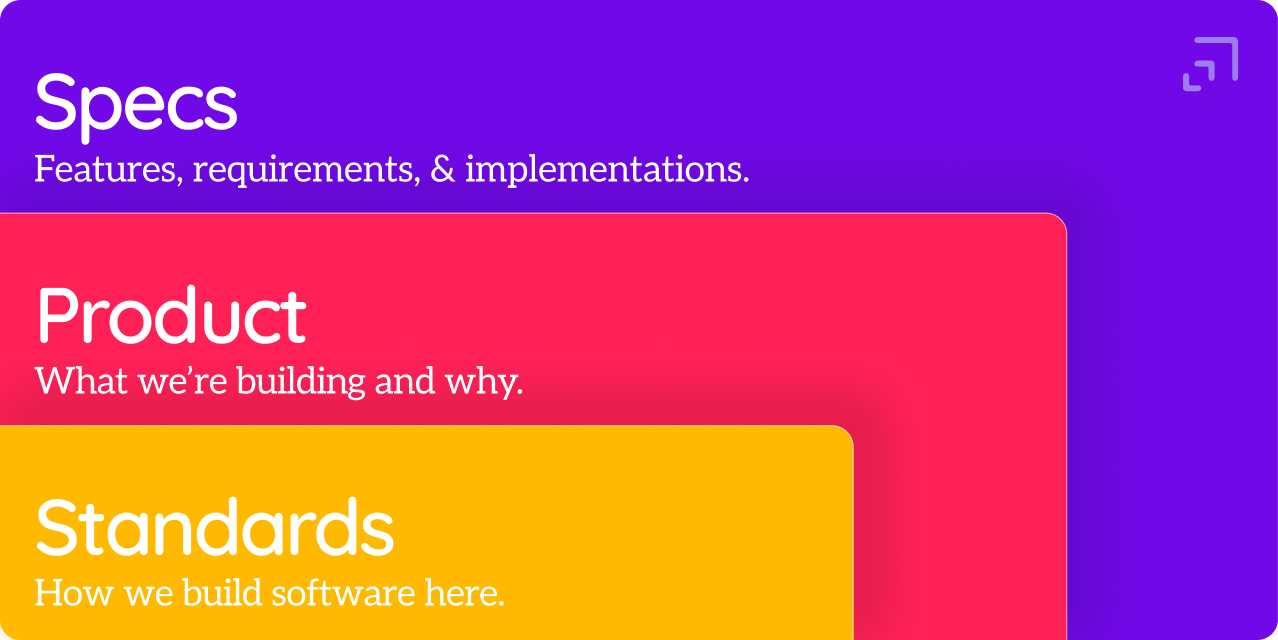Agent OS organizes your development knowledge into three distinct layers of context. Each layer serves a specific purpose and gets injected at different points in your workflow, ensuring your AI agents have exactly the right information at the right time.
- Standards - How you build (conventions, patterns, and best practices)
- Product - What you're building and why (mission, vision, and roadmap)
- Specs - What to build next (detailed feature specifications)

Layer 1
Standards
Standards define how you build—your coding conventions, architectural patterns, and development best practices. When your agents implement features, they apply these standards to ensure consistency across your entire codebase.
Standards should be organized by specialty (backend, frontend, database, testing, etc.) and can be applied in two ways: through explicit injection based on the task at hand, or via Claude Code Skills integration which allows Claude to automatically apply relevant standards with greater context efficiency.
Standards live in your base Agent OS installation within your profile(s) and get compiled into each project when you install Agent OS. This means you define your standards once, and they're available across all your projects that use that profile.
You can define different standards for different types of projects you work on by using profiles. This allows you to maintain separate standards for different types of projects you typically work on (Rails apps, Node.js projects, mobile apps, or client-specific requirements, etc.).
Layer 2
Product
Product context defines what you're building and why. This includes your product mission, target users, key differentiators, and your prioritized feature roadmap.
Your product context lives in your project's codebase in the agent-os/product/ folder. Agent OS establishes your product's context when you run the plan-product command, which creates three core documents: mission.md (your product vision and target users), roadmap.md (your prioritized feature list), and tech-stack.md (your technology choices).
Product-level context is critical because it informs strategic decisions during feature planning and implementation. When your agents understand the bigger picture—who you're building for and what problems you're solving—they can make better architectural choices and suggest improvements that align with your vision.
Layer 3
Specs
Specs define what to build next with precise implementation details. Each spec is a complete package containing requirements, visual references, technical specifications, task breakdowns, and verification criteria.
Specs are structured to support a thorough research and planning phase before implementation begins. The shape-spec phase in the Agent OS spec-driven development workflow involves interactive research with your agent—asking clarifying questions, gathering visual assets like mockups or wireframes, identifying similar features in your codebase to reference, and documenting all requirements and scope boundaries.
After research comes the write-spec phase, where requirements transform into a formal specification document. Then the create-tasks phase breaks down the spec into a strategically ordered task list organized by specialty (database, backend, frontend, testing). This structured approach ensures everyone—human and AI—understands exactly what needs to be built before any code is written.